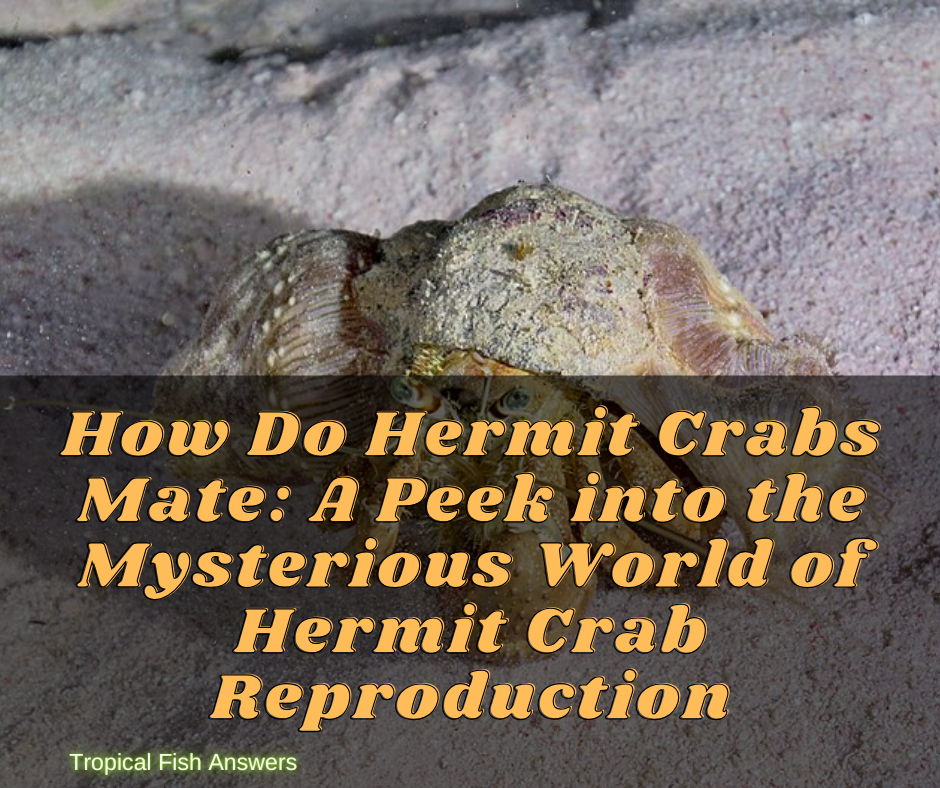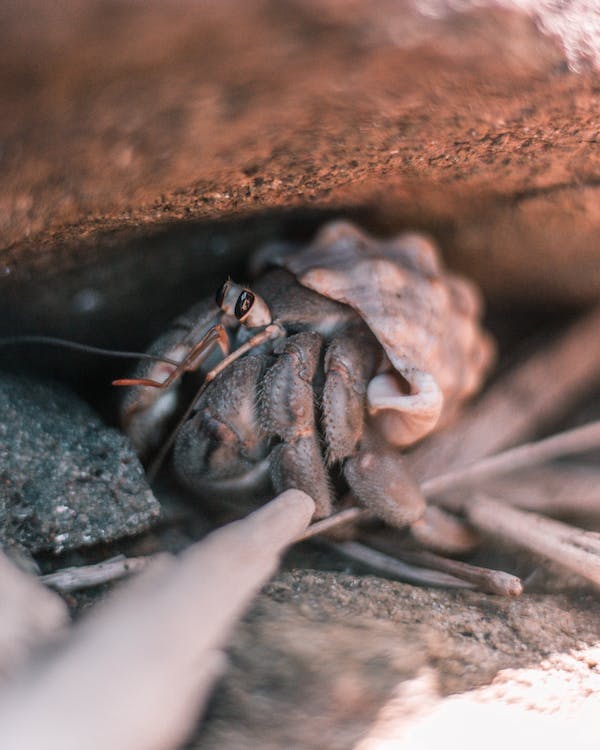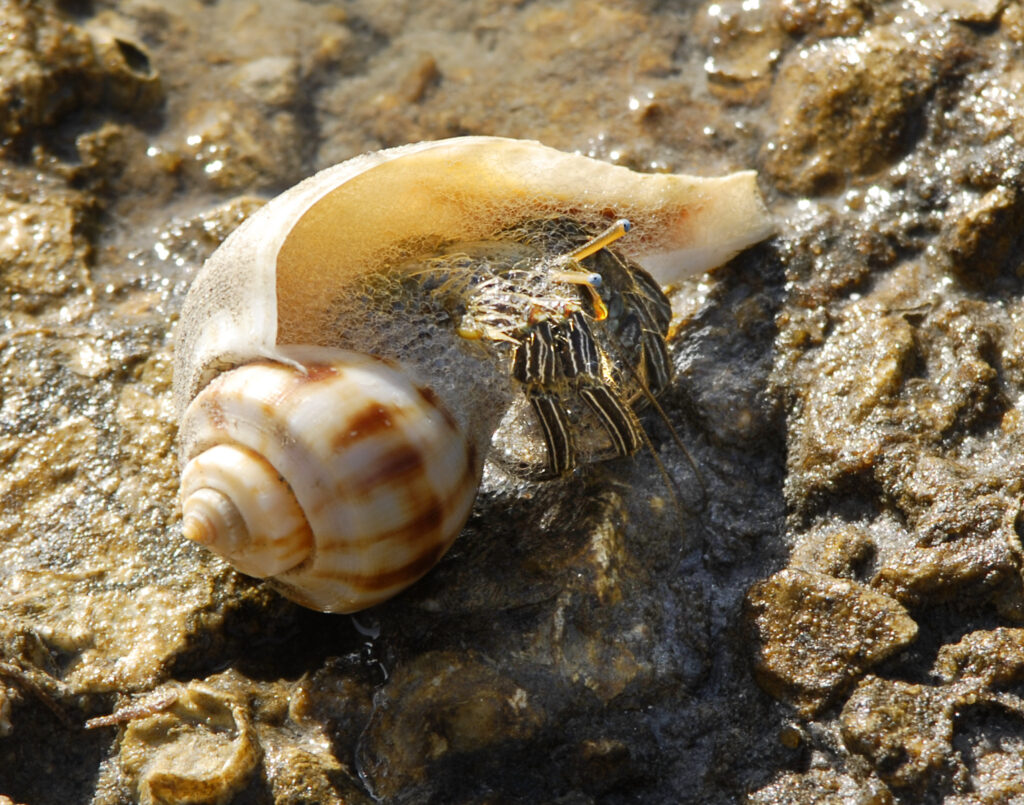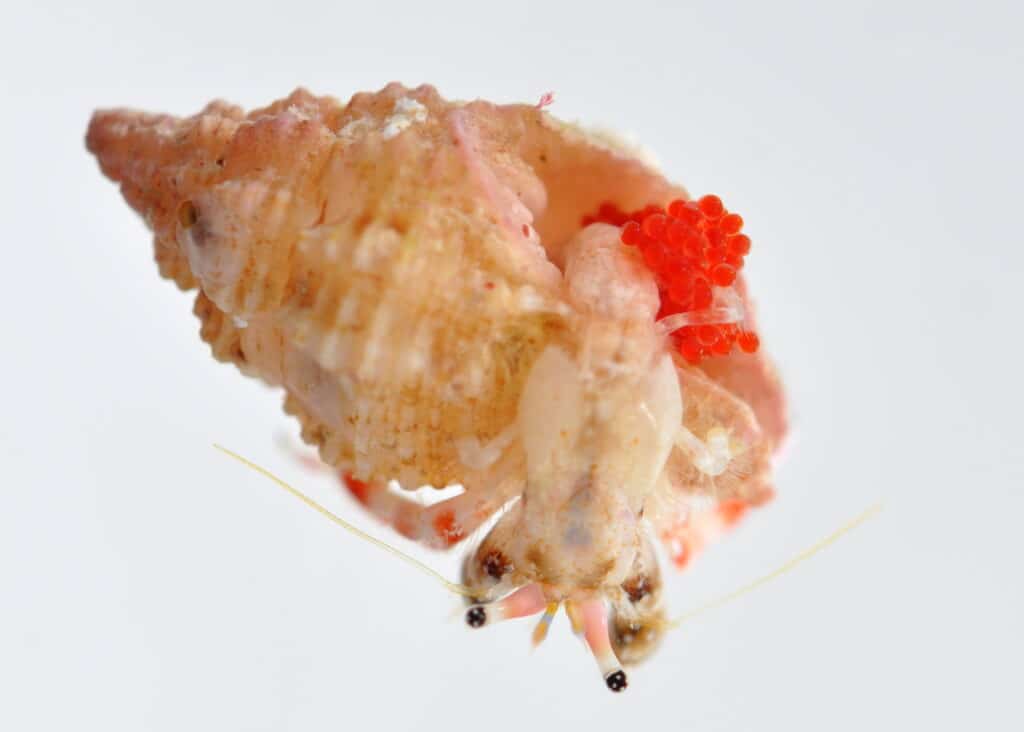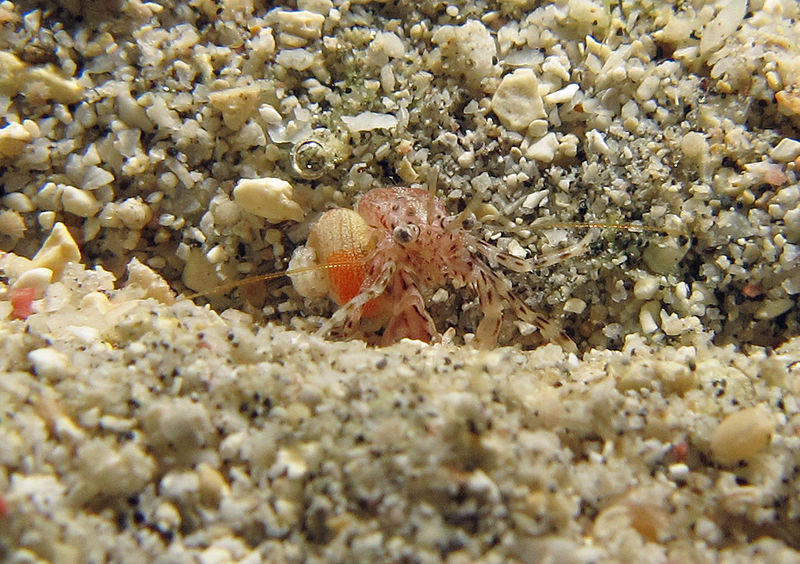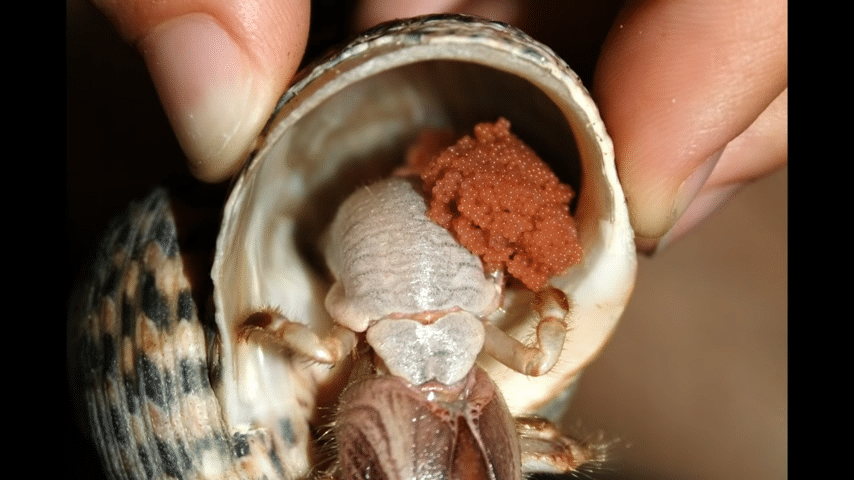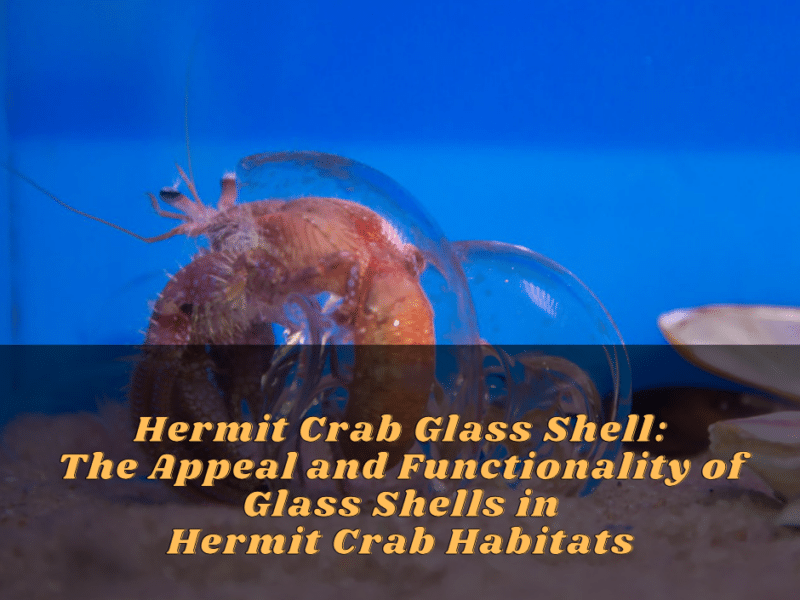Introduction
Hermit crabs are fascinating creatures that inhabit tropical and subtropical regions around the world. These small crustaceans are known for their unique ability to inhabit empty shells of other marine animals, providing them with protection and camouflage. However, it is not just their interesting choice of home that captivates the curiosity of many, but also their mating process and reproduction.
Explanation Of Hermit Crab Mating Process And Reproduction
The mating process of hermit crabs is a complex and intricate affair. It begins with the male hermit crab searching for a suitable mate. Once a potential partner is found, the male approaches the female and initiates a courtship display. This can involve waving his claws, antennae, or performing a dance to attract the female’s attention.
If the female is receptive, mating occurs. The male transfers sperm to the female using specialized appendages called gonopods. These structures are located near the base of the fifth pair of walking legs and are modified for reproductive purposes. The female stores the sperm in a sac called the spermatheca, allowing her to fertilize her eggs whenever she chooses.
After mating, the female hermit crab prepares herself for reproduction. She selects a suitable location, often a moist area close to the shoreline, where she will lay her eggs. The female then releases her fertilized eggs into the water, where they undergo several stages of development. It is important to note that hermit crabs are not live-bearers like some other marine creatures. Instead, their offspring develop externally.
Once the eggs hatch, tiny larvae are released into the water. These larvae, known as zoea, go through several molts and stages of development before they undergo metamorphosis. During this transformation, the larvae develop into juvenile hermit crabs and eventually settle on the ocean floor, seeking out a suitable empty shell to call home.
It is worth mentioning that hermit crabs have a unique reproductive strategy called serial monogamy. This means that once they mate and lay eggs, they continue to reproduce with the same partner until their eggs are fertilized and released. However, they may seek new mates if their current partner is unable to fertilize their eggs successfully.
In conclusion, the mating process and reproduction of hermit crabs are fascinating phenomena. From courtship displays and sperm transfer to the release of fertilized eggs and the development of larvae, hermit crab reproduction offers insight into the mysterious world of marine life. These remarkable creatures have adapted unique strategies to ensure the success of their species, captivating the interest of those who seek to understand their complex and intriguing lives.
How Do Hermit Crabs Mate? Mating Behavior Of Hermit Crabs
Physical Interactions And Behaviors During Mating
The mating behavior of hermit crabs is an intriguing sight to witness. When a male hermit crab is ready to find a mate, he sets out on a search, often wandering along the shoreline or seabed. Once he spots a potential partner, he initiates a courtship display to attract the female’s attention. This display can include waving his claws, antennae, or even performing a dance.
If the female is receptive to his advances, the mating process begins. The male hermit crab uses specialized appendages called gonopods to transfer sperm to the female. These gonopods are located near the base of the fifth pair of walking legs and have evolved specifically for reproductive purposes. The female then stores the male’s sperm in a sac called the spermatheca, allowing her to fertilize her eggs whenever she chooses.
Mating Process And Fertilization
After mating, the female hermit crab prepares herself for reproduction by selecting a suitable location, often a moist area near the shoreline. Once she has found the ideal spot, she releases her fertilized eggs into the water. It is important to note that hermit crabs, unlike some other marine creatures, are not live-bearers. Instead, their offspring develop externally.
The eggs hatch, giving birth to tiny larvae known as zoea. These larvae go through several molts and stages of development before undergoing metamorphosis. During this transformation, the zoea develop into juvenile hermit crabs and eventually settle on the ocean floor. They then begin their search for a suitable empty shell to call home.
It is fascinating to note that hermit crabs practice a unique reproductive strategy known as serial monogamy. This means that once they mate and lay eggs, they continue to reproduce with the same partner until the eggs are fertilized and released. However, if their current partner is unable to successfully fertilize their eggs, they may seek new mates.
In conclusion, the mating behavior and reproduction of hermit crabs provide a glimpse into the mysterious world of these fascinating creatures. From the elaborate courtship displays to the transfer of sperm and the release of fertilized eggs, hermit crab reproduction is a complex and intricate process. Studying their mating behavior not only increases our understanding of these incredible creatures but also highlights the remarkable strategies they have developed to ensure the survival of their species.
Factors Affecting Hermit Crab Mating
Hermit crabs have a unique mating behavior that is influenced by several factors. Understanding these factors can provide a glimpse into the mysterious world of hermit crab reproduction. This article will explore the environmental conditions that impact mating behavior and the effects of shell availability on mating success.
Environmental Conditions And Impacts On Mating Behavior
Environmental conditions play a crucial role in hermit crab mating behavior. Factors such as temperature, humidity, and daylight hours can significantly influence their reproductive activities. Hermit crabs are more active and engage in mating behaviors during warmer temperatures and higher humidity levels. They are also known to be more active during the night when it is cooler.
Additionally, the availability of food sources and habitat quality can impact hermit crab mating behavior. A well-nourished and healthy hermit crab is more likely to engage in mating behaviors. They require an abundant food supply to produce sufficient energy for reproduction.
Furthermore, mating behavior can be influenced by tidal patterns and lunar cycles. Hermit crabs tend to mate during specific times of the lunar month, often during the full moon or the new moon. These lunar cycles synchronize their reproductive activities with favorable tidal conditions, ensuring the survival of their offspring.
Effects Of Shell Availability On Mating Success
Shell availability is another critical factor that affects hermit crab mating success. Hermit crabs rely on empty shells as their protective homes. They outgrow their current shells and need to find larger ones to accommodate their growing bodies. The availability of suitable shells can impact their ability to mate.
In areas with limited shell availability, competition among hermit crabs for shells becomes intense. This competition can lead to aggressive behaviors and even fights. Male hermit crabs with larger and more attractive shells have a higher chance of attracting mates. Female hermit crabs often prefer males with more spacious shells as they indicate a higher fitness level.
However, shell availability is not the sole determinant of mating success. Female hermit crabs also assess the suitability of potential mates based on their size, coloration, and overall appearance. The male’s courtship display and behaviors play a crucial role in attracting a female’s attention and increasing their chances of successful mating.
In conclusion, environmental conditions and shell availability are crucial factors that impact hermit crab mating behavior. Temperature, humidity, daylight hours, and lunar cycles all play a role in synchronizing their reproductive activities. The availability of suitable shells and the male’s traits and behaviors also influence mating success. Further research into these factors will provide a deeper understanding of the complex reproductive strategies employed by these fascinating creatures.
Hermit Crab Egg Development
Overview Of Egg Development And Incubation Period
In the mysterious world of hermit crab reproduction, the process of egg development and incubation is a crucial stage. Once mating has occurred, the female hermit crab carries fertilized eggs on her abdomen until they are ready to hatch.
The development of hermit crab eggs can vary in duration, depending on the species. It typically takes several weeks or even months for the eggs to develop fully. During this time, the female hermit crab takes great care to protect her eggs, ensuring their safety until they are ready to be released into the water.
It is worth noting that hermit crab reproduction is a complex process. Female hermit crabs have specialized reproductive organs, called gonopores, which release and fertilize the eggs. The male hermit crab also has specialized structures, called gonopods, which are used to transfer sperm to the female during mating.
Once the eggs are fully developed, usually indicated by changes in color, size, or texture, the female hermit crab will move to a suitable location to release them into the water. This is typically done at high tide, ensuring that the newly hatched larvae have a better chance of survival in the ocean.
Importance Of Humidity And Temperature During Incubation
During the incubation period, humidity and temperature play a crucial role in the development and survival of hermit crab eggs. These factors directly impact the health and vitality of the developing embryos.
Hermit crabs are ectothermic animals, meaning their body temperature is regulated by their environment. Maintaining appropriate humidity levels is essential as it helps prevent the eggs from drying out and facilitates proper embryonic development.
High humidity is particularly important for hermit crab eggs as it mimics the conditions within the female’s brood chamber. Adequate moisture ensures that the eggs remain hydrated, allowing for optimal growth and development. It also helps prevent desiccation and mortality of the embryos.
Temperature is another critical factor during incubation. Most hermit crab species prefer warmer temperatures for successful egg development. Generally, a temperature range between 75-85 degrees Fahrenheit (24-29 degrees Celsius) is ideal. This provides the necessary warmth for embryonic development and accelerates hatching.
It is worth mentioning that different hermit crab species may have specific temperature and humidity requirements. Therefore, it is important for hermit crab breeders or enthusiasts to research and provide suitable conditions for their particular species.
In conclusion, hermit crab egg development and incubation is a crucial stage in the mysterious world of hermit crab reproduction. The female hermit crab carefully protects and nourishes the developing eggs until they are ready to be released into the water. Maintaining appropriate humidity and temperature levels during incubation is vital for the successful development and survival of the embryos. Understanding these factors provides a deeper insight into the complex reproductive strategies employed by these fascinating creatures.
Hermit Crab Breeding In Captivity
Hermit crabs are fascinating creatures, and their reproduction is a complex process that takes place in the mysterious world of the ocean. Breeding hermit crabs in captivity can be a rewarding experience for enthusiasts and provides a deeper understanding of these intriguing animals. In this article, we will explore success stories of captive breeding and share some useful tips for those interested in breeding hermit crabs.
Success Stories Of Captive Breeding
Breeding hermit crabs in captivity can be a challenging task, but there have been some success stories that inspire enthusiasts. One notable success is the breeding of the Caribbean hermit crab (Coenobita clypeatus) in captivity. By creating a suitable environment that mimics their natural habitat and providing proper nutrition, some enthusiasts have successfully bred these hermit crabs. This achievement not only contributes to the conservation of the species but also offers valuable insights into their reproductive biology.
Another success story involves the breeding of the Ecuadorian hermit crab (Coenobita compressus). With careful management of temperature, humidity, and diet, enthusiasts have achieved successful captive breeding of this species. This accomplishment highlights the potential for captive breeding programs to contribute to the availability of captive-bred hermit crabs in the pet trade and reduce the impact on wild populations.
Tips For Those Interested In Breeding Hermit Crabs
If you are interested in breeding hermit crabs, here are some tips to increase your chances of success:
- Create a Suitable Environment: Provide a spacious enclosure with proper substrate, hiding places, and climbing structures. Mimic their natural habitat by including sand, rocks, and shells for them to explore and inhabit.
- Maintain Optimal Temperature and Humidity: Different species of hermit crabs have specific temperature and humidity requirements. Research the requirements of your particular species and ensure you provide the appropriate conditions to promote breeding behavior and successful reproduction.
- Provide a Varied and Nutritious Diet: A well-balanced diet is crucial for healthy breeding. Offer a variety of fresh fruits, vegetables, protein-rich foods, and calcium supplements. Providing a diverse diet ensures hermit crabs have access to necessary nutrients for egg development and successful reproduction.
- Observe and Monitor Behavior: Carefully observe your hermit crabs’ behavior to identify signs of mating, such as courtship rituals or the female carrying eggs. Monitoring their behavior will also help you determine if the conditions in the enclosure need adjustments.
- Allow for Privacy: Create a quiet and stress-free environment to encourage breeding behavior. Avoid excessive handling or disturbances that may disrupt the mating process.
Breeding hermit crabs can be a challenging and rewarding experience. While success may not be guaranteed, with patience, proper care, and attention to their specific needs, you can increase your chances of successful breeding. Remember that each species may have unique requirements, so research and understand the specific needs of your chosen species.
In conclusion, hermit crab breeding in captivity offers a fascinating glimpse into the mysterious world of their reproduction. With success stories of captive breeding and helpful tips for enthusiasts, it is possible to contribute to the preservation of these captivating creatures while gaining a deeper understanding of their complex reproductive biology. Breeding hermit crabs in captivity not only provides educational insights but also ensures the availability of captive-bred specimens in the pet trade while reducing the impact on wild populations.
Conclusion
Breeding hermit crabs in captivity is a rewarding experience that offers enthusiasts a deeper understanding of these fascinating creatures. By creating a suitable environment, maintaining optimal conditions, providing a nutritious diet, and observing their behavior, you can increase your chances of successful breeding. While each species may have unique requirements, with patience and proper care, you can contribute to the preservation of these captivating animals while reducing the impact on wild populations.
Summary Of Hermit Crab Mating And Reproduction
Mating and reproduction in hermit crabs are intricate processes that occur in the mysterious world of the ocean. The success stories of captive breeding, such as the Caribbean hermit crab and the Ecuadorian hermit crab, highlight the potential for enthusiasts to contribute to the conservation of these species. By creating a suitable environment that mimics their natural habitat and providing proper nutrition, enthusiasts have achieved successful captive breeding.
To increase your chances of success in breeding hermit crabs, it is crucial to create a suitable environment with proper substrate, temperature, humidity, and hiding places. Providing a varied and nutritious diet is essential for healthy breeding, and carefully observing their behavior helps identify signs of mating. Allowing for privacy and avoiding disturbances contribute to the breeding process.
Appreciation For The Wonders Of Nature’s Diversity
Breeding hermit crabs in captivity not only offers insights into their reproductive biology but also fosters a deep appreciation for the wonders of nature’s diversity. These creatures have unique adaptations and behaviors that make them fascinating to observe and study. By participating in captive breeding programs, enthusiasts contribute to the availability of captive-bred hermit crabs in the pet trade while reducing the demand for wild-caught specimens.
In conclusion, breeding hermit crabs in captivity provides a valuable opportunity to contribute to the conservation of these intriguing creatures. With successful stories of captive breeding and useful tips for enthusiasts, it is possible to gain a deeper understanding of their complex reproductive biology. By ensuring their well-being and promoting healthy breeding, we can appreciate the diversity of nature and play a role in preserving these captivating animals for future generations.
How Do Hermit Crabs Mate: A Peek into the Mysterious World of Hermit Crab Reproduction
1. What does a gravid hermit crab look like?
A gravid hermit crab, which means carrying eggs, will have a distinctive appearance. It will look similar to a drawing by Alcock, with the female crab attaching its eggs to the setae on its pleopods using a glue-like substance.
2. How do male hermit crabs mate?
Male hermit crabs have a relatively large penis compared to their body size. This enables them to mate without leaving the safety of their shell. The male crab will roll the female onto the back of her shell, gently rocking and stroking her legs. The female extends to allow the male to place his sex tubes on her gonophores (openings), where he then deposits his spermatophore.
3. Can hermit crabs mate while still in their shells?
Yes, mating between hermit crabs occurs while they are still in their shells. Both the male and female extend their bodies so that their abdomens are very close, allowing for mating to take place. However, it is important to note that mating behavior can sometimes be mistaken for an attempt to steal the female’s shell.
4. Are there any interesting behaviors during hermit crab mating?
Yes, there can be variations in mating behavior among different hermit crab species. Some owners may witness more vigorous mating, which can be initially alarming. However, others report that mating between their hermit crabs is calm and gentle. Each crab species may exhibit unique mating behaviors, adding to the intrigue of this mysterious world.
5. How are hermit crab eggs fertilized?
Hermit crab eggs are believed to be fertilized externally as they are extruded. The male crab deposits his sperm onto the female’s gonophores (openings), and the eggs are then fertilized externally. This process occurs during mating.
6. Can multiple males try to mate with a female hermit crab?
In some Coenobita species, multiple males may attempt to mate with a female. However, there is an interesting behavior where other males may try to force the female to drop her eggs prematurely so that they can have a chance to mate with her.
7. Do hermit crabs mate outside of their natural habitat?
Yes, hermit crabs can successfully breed and raise their eggs even within a home environment. Stacy Griffith, for example, has documented the mating of her Coenobita clypeatus and Coenobita brevimanus hermit crabs through videos shared online.
Please note that the usage of the online data provided in this FAQ is subject to the terms and conditions stated by the owners and any other use may be considered a breach of this agreement.
